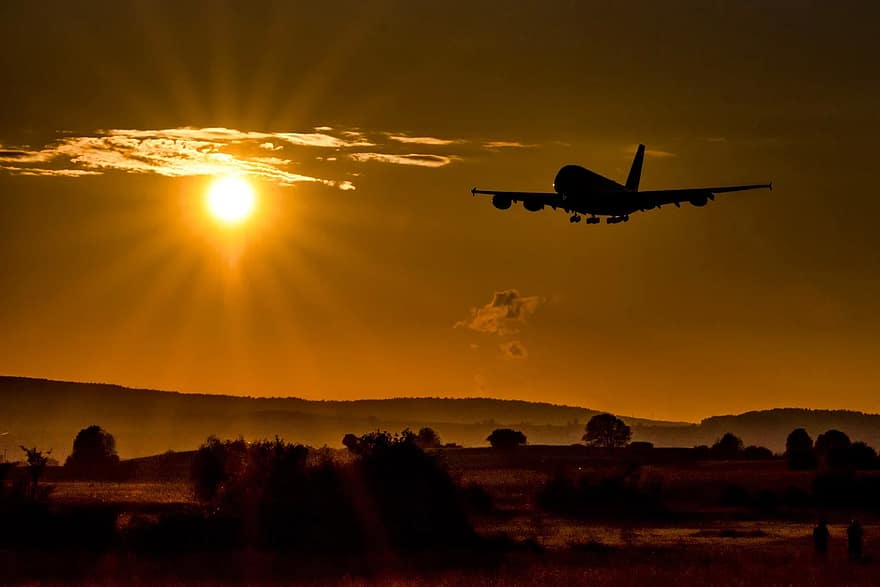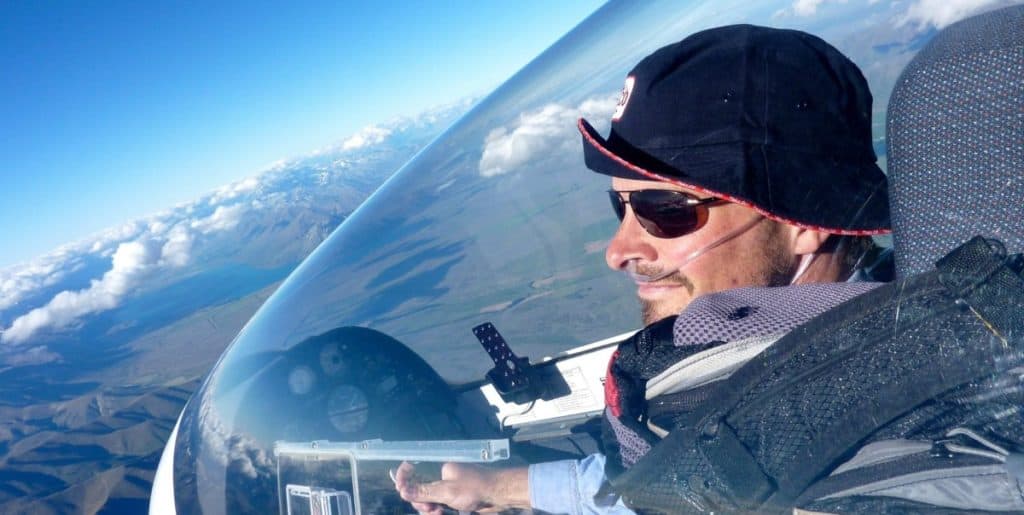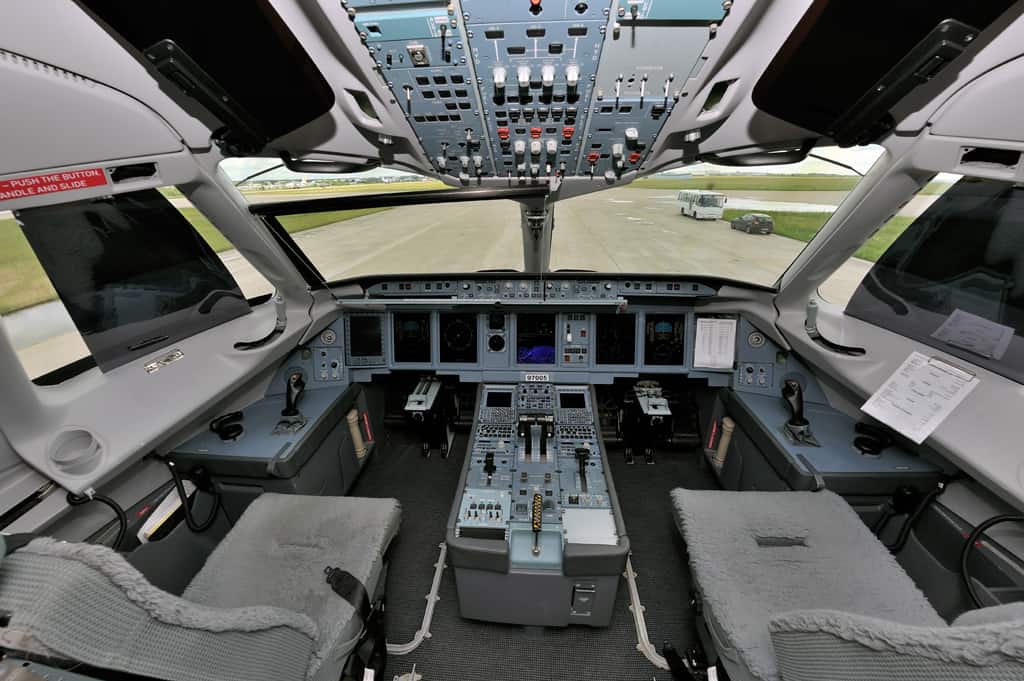
We have all been driving in a car in the early evening as the sun is setting and the glare it creates is sometimes painful and also be very dangerous. Flying into the sun must also pose the same problems, so how do pilots cope with it when the sun is blazing through the windows?
Pilots try to block direct sunlight into the cockpit using good quality sunglasses, aircraft-mounted sun visors, shades, ball caps, and even Post-it notes and checklists stuck to the windscreen. When landing or taking off into the sun the pilot has to bear the pain as the runway needs to be seen.
The worst times for pilots are flying on an easterly heading as the sun rises or on a westerly heading as the sun is setting. During these times the sun is low to the horizon making the bright light straight into the cockpit which at the very least can be a painful nuisance or end in tragedy!
There are many ways many pilots try to block out the sun no matter if they are flying in a helicopter like myself, or a Boeing 747!
How Do Pilots Deal With Direct Sunlight?
At times pilots will be flying directly into the sun and I can tell you it is painful if you can’t get that damn thing hidden or the glare reduced. Not only is it dangerous by preventing the pilot from being able to see, but it can also be a distraction and can cause the skin to burn. My forearms and face always get a healthy redness when flying around in summer!
Some aircraft are equipped with cockpit windows that help to reduce glare and reduce the sun’s harmful UV rays, but in a helicopter, all I have is clear plexiglass windows that I swear seem to make the sun worse. I have been in some very crowded airspace with other aircraft I never knew were there because I could not see them and it’s a sickening feeling when you finally see them and it makes you jump!
For most commercial airplanes they are flying under the supervision of air traffic control with aircraft separation being maintained by ATC, so the collision risk is practically zero, it just becomes more of a hassle for those pilots.
For the rest of us mere mortals flying closer to the ground with our own MK I eyeball to keep us safe there are a few tricks that we all use to help us see:
Good Quality Sunglasses
No matter what aircraft a pilot is flying, a pair of high-quality sunglasses is essential to keep the eyes safe and healthy. Because of the sun’s UV rays, for every 1000ft of altitude gained, the amount of UV radiation increases by 5%. For pilots flying up in the higher levels of the atmosphere, the amount of UV radiation entering their eyes can be significant and damage can soon be done.
This is even without the sun shining directly into the cockpit!

The added benefits of a good pair of sunglasses are that they can come with lens coatings to help reduce glare, they can have coatings that automatically darken to match the light intensity and while doing this they help to keep the iris as small as possible to prevent too much light entering the pilot’s eye.
Without sunglasses, fatigue in the eye increases, blinking increases, and soreness can occur. I flew into the sun once on a bright snow-covered day without my sunglasses and the following day my eyes felt like they had sand in them. I know I did some short-term damage as my eye could hardly open during the flight as the brightness of the environment was so bright!
To find out more information on exactly why all pilots should wear sunglasses check out this article:
Do All Pilots Need Sunglasses? : Yes, Find Out Why!
Aircraft Mounted Sun Visors
Most commercial airplanes and even smaller aircraft like Cessnas come with or have the option to be fitted with sun visors for the pilots. The most common type of aircraft-mounted sun visors are darkened plexiglass screens that can swivel down and into position just like in your car. This allows each pilot to adjust the visor to their particular liking.

For side windows, a semi-opaque roller screen is sometimes used to help block the sun glare when in cruise and under the supervision of air traffic control as they can block the view to a fair degree. Aircraft-mounted sun visors and a pair of sunglasses can really help to reduce the ambient light and the direct glare of the sun and are a welcomed addition to pilots on long flights with the sun beating directly into the cockpit.
I would love aircraft-mounted sun visors in my helicopter, I can tell you!

Join My Newsletter & Get Great Tips, Information and Experiences To Help You Become a Superb Pilot!
This leads me to my next few tips that the rest of us pilots flying in the basic aircraft are left with:
Hand, Fingers, or Thumb
The good old hand in front of the sun is a tried and true method and always works, but it has a few downsides:
- Your arm gets tired! After 10 minutes I swear my hand can feel like it weighs 20 lb!
- It blocks the sun great, but it also blocks the view, and trying to see another aircraft behind your hand is impossible!
- If you need your hands to manipulate the controls, change radio frequencies, adjust the charts or GPS then you are hooped
Depending on how much sun glare is affecting the pilot, just a simple thumb held up maybe suffice, or even placing your fingers on the frame of the window to rest your hand while blocking that stupid sun can work well. Whichever way the pilot picks, if the flight is going to be a long duration they need to find another method!
Post-it Notes
Although this might sound silly, a Post-it note stuck to the window makes a great little sunshade! This is a technique I was shown over a decade ago by an ‘Old Salt’ pilot and I’ve used it ever since! I make sure to always keep a Post-it note in my notebook and when the sun is bugging me, I bring it out and stick it on the window where the sun is.
I love using it as it’s easy to move around and doesn’t block my view of the sky. It’s nowhere near as good as a full sun visor, but in a pinch, it works great!
Flying Technique
If all of the ways listed above are not available or do not work for whatever reason then there are two options that a pilot can do with the aircraft :
Fly Out of Trim – This means putting in some right or left pedal to ‘Side Slip’ the aircraft through the air. It’s not the most fuel-efficient or comfortable way to fly but if the sun is close to a door post or window frame, putting in a little pedal can yaw the aircraft enough to block the sun behind the frame or post.
This technique is great if you wish to get a few minutes’ rest from the biting sun and works really well if flying by yourself as any passengers may get an odd feeling of falling out of the side of the aircraft, but if you need a break, it works great.
Heading Change – If the sun is just setting or rising and it’s directly in your eyes, another technique is to change the aircraft heading. Instead of flying directly from point A to B, a pilot can use a zig-zag pattern instead. Think of it like a game of golf, instead of walking straight down the fairway, the golfer is walking from one side of the fairway to the other as they get closer to the hole – this is how I seem to golf anyways!
By changing the heading the pilot may be able to hide the sun behind a window or doorpost for just enough time for the sun to rise or fall enough to prevent its being a distraction. 5 minutes flying on each heading is a great technique to use.
Not the most fuel-efficient way to fly but in a pinch, again, can be used to provide some respite from the sun.
To Finish
Dealing with the sun is something that all pilots will face from time to time and it can be very distracting. Having a good quality pair of sunglasses is by far the first line of defense but then adding some form of sun visor or sunshade can really help to reduce glare.
Being able to see other aircraft is very important, especially for those of us not under the supervision of air traffic control, using the techniques listed above can really help to maintain a good visual scan out of the windows and allow everyone to stay safe.
Further Reading
If you found this article helpful may I suggest these too:

